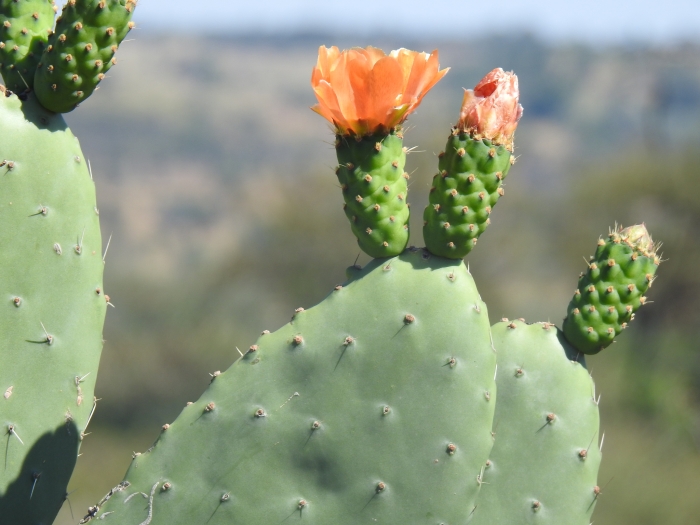Barbary Fig
(Opuntia ficus-indica)
Barbary Fig (Opuntia ficus-indica)
/
/

Matthew Fainman
CC BY 4.0





















































Estimated Native Range
Summary
Barbary Fig is valued for its drought tolerance and its ability to produce fruit and vegetable nopales under arid conditions, making it a significant crop in dry areas. The fruits are edible after chilling and peeling, and the plant is also used for erosion control due to its root system that stabilizes the soil. In cultivation, it thrives in full sun with low to very low water requirements and prefers soils with fast drainage. However, it can be invasive outside its native range, so caution is advised when planting it in non-native areas.CC BY-SA 4.0
Plant Description
- Plant Type: Succulent
- Height: 12-15 feet
- Width: 6-9 feet
- Growth Rate: Moderate
- Flower Color: Yellow
- Flowering Season: Summer
- Leaf Retention: Evergreen
Growth Requirements
- Sun: Full Sun
- Water: Low, Very Low
- Drainage: Fast
Common Uses
Bank Stabilization, Bee Garden, Bird Garden, Deer Resistant, Drought Tolerant, Edible*Disclaimer: Easyscape's listed plant edibility is for informational use. Always verify the safety and proper identification of any plant before consumption., Fire Resistant, Hummingbird Garden, Low Maintenance, Potted Plant, Rabbit Resistant, Rock Garden, Showy Flowers, Street Planting
Natural Habitat
Native to arid and semiarid regions of Mexico
Other Names
Common Names: Indian Fig, Cactus Pear, Prickly Pear, Spineless Cactus, Nopal De Castilla, 食用仙人掌, Tuna Cactus
Scientific Names: , Opuntia ficus-indica, Opuntia vulgaris, Opuntia paraguayensis, Opuntia maxima, Opuntia apurimacensis, Opuntia ficus-barbarica, Opuntia joconostle, Opuntia undulata, Opuntia incarnadilla
GBIF Accepted Name: Opuntia ficus-indica (L.) Mill.